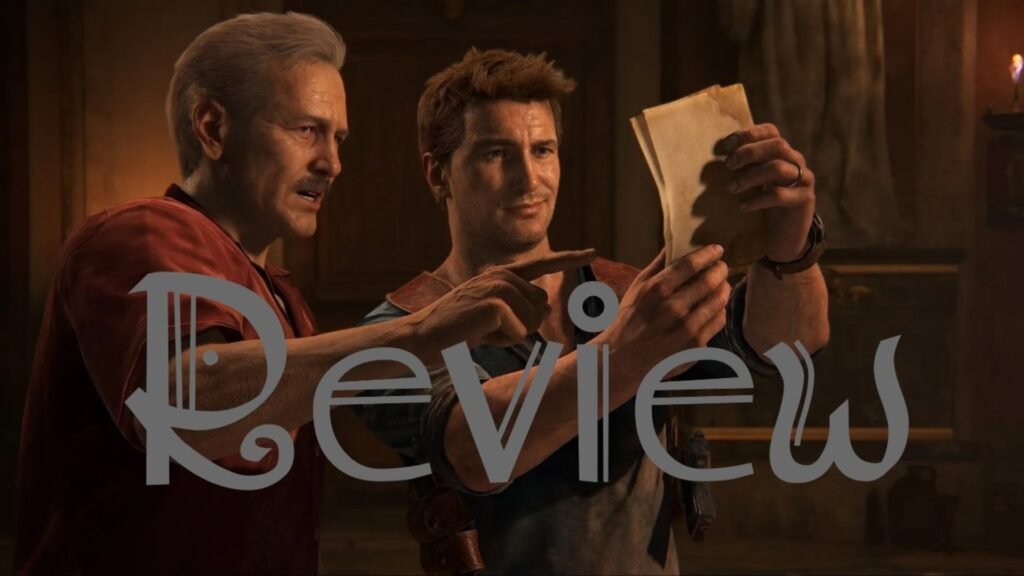
In the midst of its frantic combat, slick parkour, and outrageous action choreography, Uncharted 4: A Thief’s End achieves something wonderful: maturity. This is less a breezy lad’s tale about fortune and glory and more a story about the lads all grown up, bolstered by an equally advanced graphics engine and career-high performances from its cast. A surprisingly well-crafted set of multiplayer modes adds the finishing touch.
What holds it back, however, is an uninspired and overly long third act, which considerably slows the pace with repetitive gameplay. As a result, Uncharted 4 doesn’t quite reach the greatness of some of developer Naughty Dog’s leaner, more inventive predecessors. Its 15-hour experience starts strong, exploring Nate, Elena, and Sully as a more world-weary group of adventurers. Their concerns about setting out on one more journey are layered throughout the game’s quieter moments and marvelous incidental conversations.
Your companion characters never break the immersion during action sequences, either. If you choose to play stealthily, they’ll do the same. If they’re in your way while climbing, they’ll step aside and let you clamber over them. They’re competent in gunfights, helpful in traversal, and witty throughout. They feel vital.
This level of polish and fluidity permeates Uncharted 4. During traversal, you can now reach for platforms using the DualShock thumbstick, resulting in smooth, unbroken climbing. The new 4×4 handles tricky terrain well, and the camera loves Nate’s grappling hook. While I would have enjoyed more to do in Uncharted 4‘s expansive environments, I appreciated the occasional freedom of multiple pathways to reach my goal.
The same holds true for the combat stages, which take place in elaborate adventure playgrounds, offering the option for stealthier gameplay. I enjoyed the freedom to play less aggressively, even if the stealth mechanics themselves feel fairly routine for 2016. If you’re noticed, Uncharted 4’s enemies will spring into action and distinguish themselves in combat. The open level design allows them to employ intelligent tactics like flanking, and they rarely forget you’re there if you try to hide.
Such realistic behavior means you have to keep moving in battle. It’s typical Uncharted-style shooting, but there’s a genuine satisfaction to each kill. It’s fun, frantic action, and somehow, the visuals keep up with it all.
Uncharted 4’s dramatic vistas are predictably stunning, but it’s the little details that truly astound. The regularity of such beauty borders on absurd. It may run at 30 frames per second, but this is the prettiest game I’ve ever played.
In terms of the series’ trademark outrageously choreographed action sequences, Uncharted 4 suffers from a curious lack of imagination. There are a few explosive moments, but otherwise, the thrills are more predictable. This becomes a significant issue in the third act, where the pacing slows to a crawl. The jungle section, in particular, is a repetitive stretch of shooting and climbing, and after a while, every encounter blends together into a slog. However, things pick up significantly by the end. The thoughtful exploration of the characters and their relationships has a subtle payoff that bucks the typical action formula.
It’s to Naughty Dog’s credit that it stays true to the characters and their motivations. Once you’ve finished the main campaign, there isn’t much else to do, but Uncharted 4’s multiplayer offers extended life. Its confident 5v5 and 4v4 modes add variety to the experience. While multiplayer is still a sideshow to the main campaign, its four modes—Team Deathmatch, Plunder, Command, and Ranked Team Deathmatch—embody the series’ most enjoyable qualities: camaraderie, intense gunfights, and a constant sense of momentum.
Deathmatch is ranked, providing competitive longevity and skill-based matchmaking, but Plunder and Command are the most fun. Command is a map-domination variant that places greater emphasis on teamwork by marking the strongest player on each team—the captain. Plunder works similarly to previous Uncharted games, where the goal is to carry an idol to a central point before the other team can do the same.
Slowly dragging an idol across a giant ravine while being shot at from all sides creates a hilarious contrast in pace. The new abilities you can wield in all of Uncharted 4‘s multiplayer modes encourage chaos. Spending earned points to temporarily wield supernatural powers can completely disrupt what would otherwise be a typical firefight.
Instead of purchasing flashy powers, you can also summon powerful AI-controlled allies in battle. These helpers can snipe, shoot with brute force, heal, and serve as distractions for your opponents. It plays beautifully.
Because it runs at 60 frames per second, the shooting feels smoother than in the main campaign, with the same fluidity in scaling walls and swinging, now with an added sense of smoothness. Naughty Dog also does an excellent job of reimagining familiar environments from the main campaign into fresh, interesting layouts across eight maps.
While it’s difficult to predict what Uncharted 4’s multiplayer will look like in the future, there are enough unlockables and perks to keep completionists engaged. Naughty Dog has promised additional maps, new mysticals, and a co-op mode, which will keep me coming back for more.
Uncharted 4: A Thief’s End is a remarkable achievement in both blockbuster storytelling and graphical beauty. While it is let down by a lack of imagination and some self-indulgence—especially in the third act, which drags on far too long—it carries on the series’ proud tradition of peerless polish and style, with a fantastic multiplayer component to boot. Most importantly, it serves as a fitting send-off for the ragtag group of characters we’ve known for nine years.